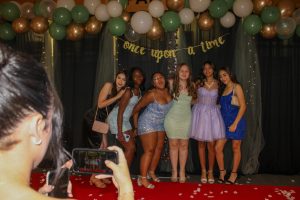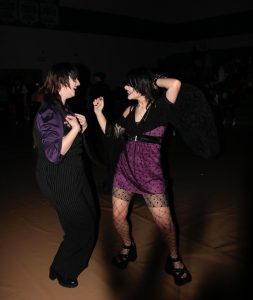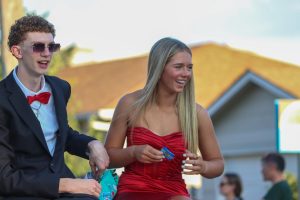Page 2: Student journalists work behind the scenes
April 7, 2021
Deadlines, Google Docs and four-hour work nights.
The world of student journalism is more than the readers see when looking at Quirky Questions in the Panther’s Tale or the photo galleries on pantherstale.com or the 200-plus pages in the yearbook.
“Journalism kids spend an ungodly amount of time doing journalism things,” said Jordan Parcell, the copy editor for the Panther’s Tale. “We take photos at just about every school-related event and write about what goes on at the school. And (we) put everything into a nicely-packaged physical product that’s available for the entire school to see.”
Joanna Chadwick, who wrote for The Wichita Eagle for 20 years, advises the students as they decide the content and how to visually represent what they feel is important for the student body.
Between putting out newspapers for the community and school every two weeks or producing yearbooks that cost thousands of dollars and be cherished for years to come, journalism students dedicate themselves to the product.
“Without journalism, our students would not have knowledge of what happens around the school and even around the world,” yearbook marketing editor Shaye Comes said. “Sharing both facts and opinions allows us to educate our community and make them better citizens.”
Students in the journalism program write stories, design pages and take photos. Versatility is a key aspect of student journalists.
Writers dedicate their time to countless interviews, rounds of copy-editing and finding the facts to support their stories.
Designers spend hours creating layouts, worrying about the minute details and guiding the reader through the page using design elements.
Photographers attend nearly every school event to capture the moments students want to see, including exciting, meaningful and heartfelt memories to be cherished. And after the fact, they edit the photos to be as professionally polished as possible.
“We can be the change by impacting others, making them feel a different or certain way and enact that sense of justice and importance,” newspaper staffer Nik Shay said.
The student journalism department is filled with passionate students who have a drive for using key journalism aspects and working as professional writers, designers and photographers at young ages.
“We’re passionate about telling the stories that students want and need to read about,” said Mya Studyvin, who is the newspaper content editor and yearbook production editor. “Student engagement is the best part of our job and I’m proud to say I’m involved in the Derby journalism department.”
According to Studyvin, these students pride themselves on telling stories “about things no one else is talking about and things that are relevant in pop culture, while giving students a voice and an opportunity to support a student-run production.”
Covering topics such as mental health, women’s healthcare, term schedules and more, the journalism department reaches a large demographic of people and uses their talents to spread the stories of others.
“Please know that our work does not always come easy,” Comes said. “It is often hard to put your own work that you’ve poured your heart and soul into online and in a huge book for all of your peers and teachers to be able to view. Use kindness and empathy when making judgments on a student’s work, because we really do care about what you think.”
Parcel’s goal is for the journalism department to ensure the whole school community is represented.
“We could be considered the voice of the school population,” Parcell said. “It’s our job to tell the stores of the students and the stories that they need to hear. We were the first publication to break the news about the football team’s quarantine. We also have the power to tell important stories — stories of racism, sexual assault and so many other big issues that directly impact DHS students.”
Recently, The Panther’s Tale Newspaper was given a $1,000 grant from the Derby Community Foundation to print the next four issues.






